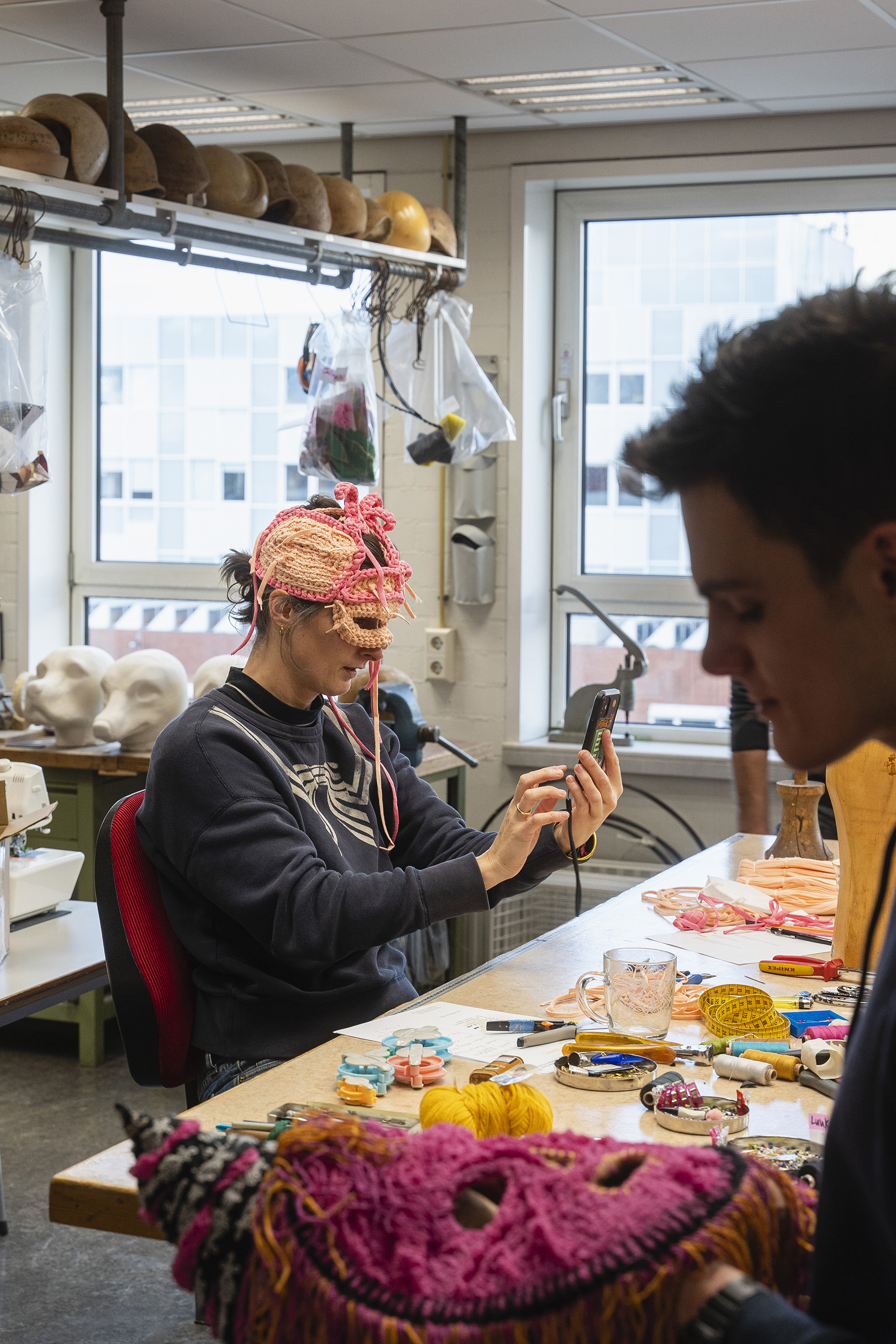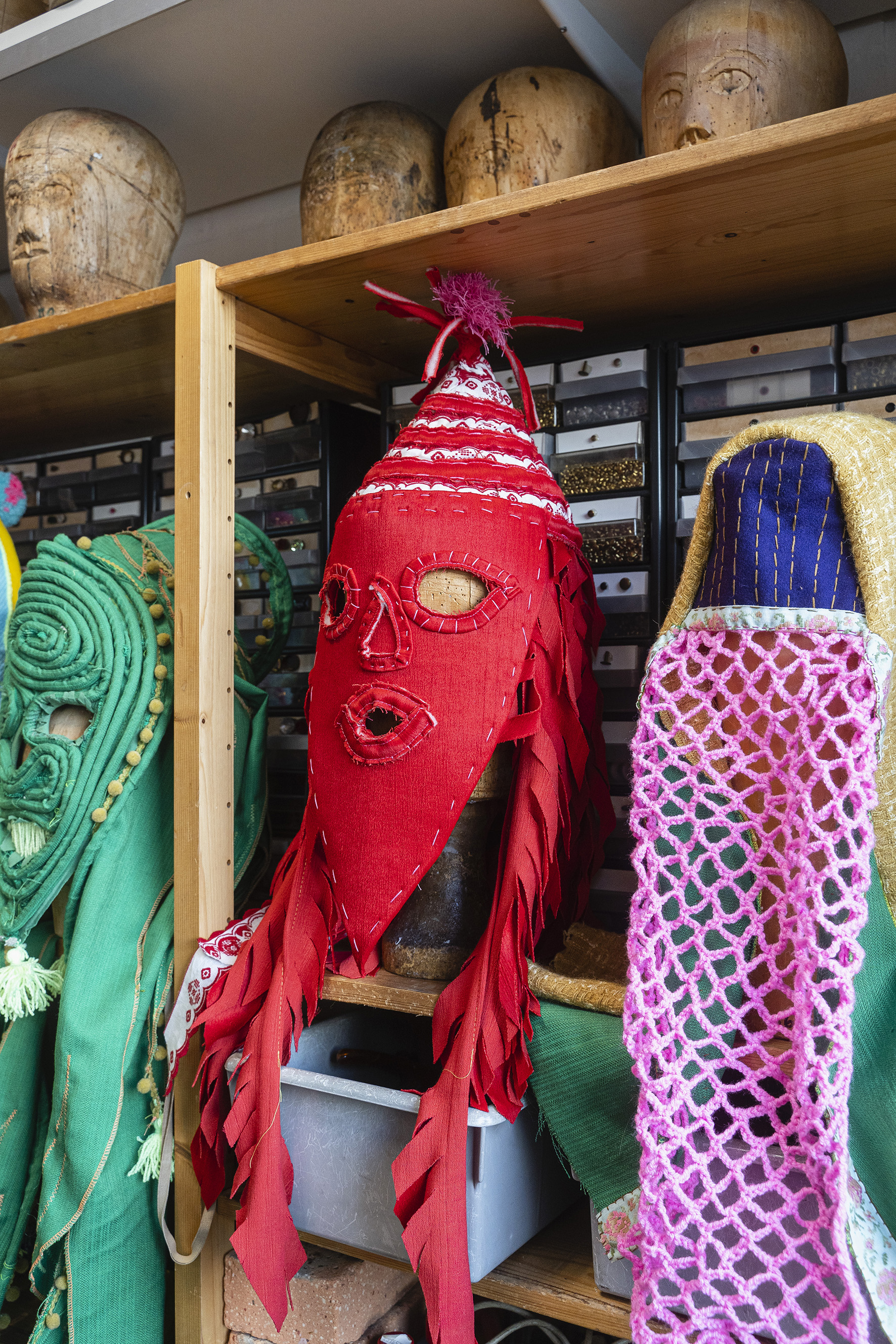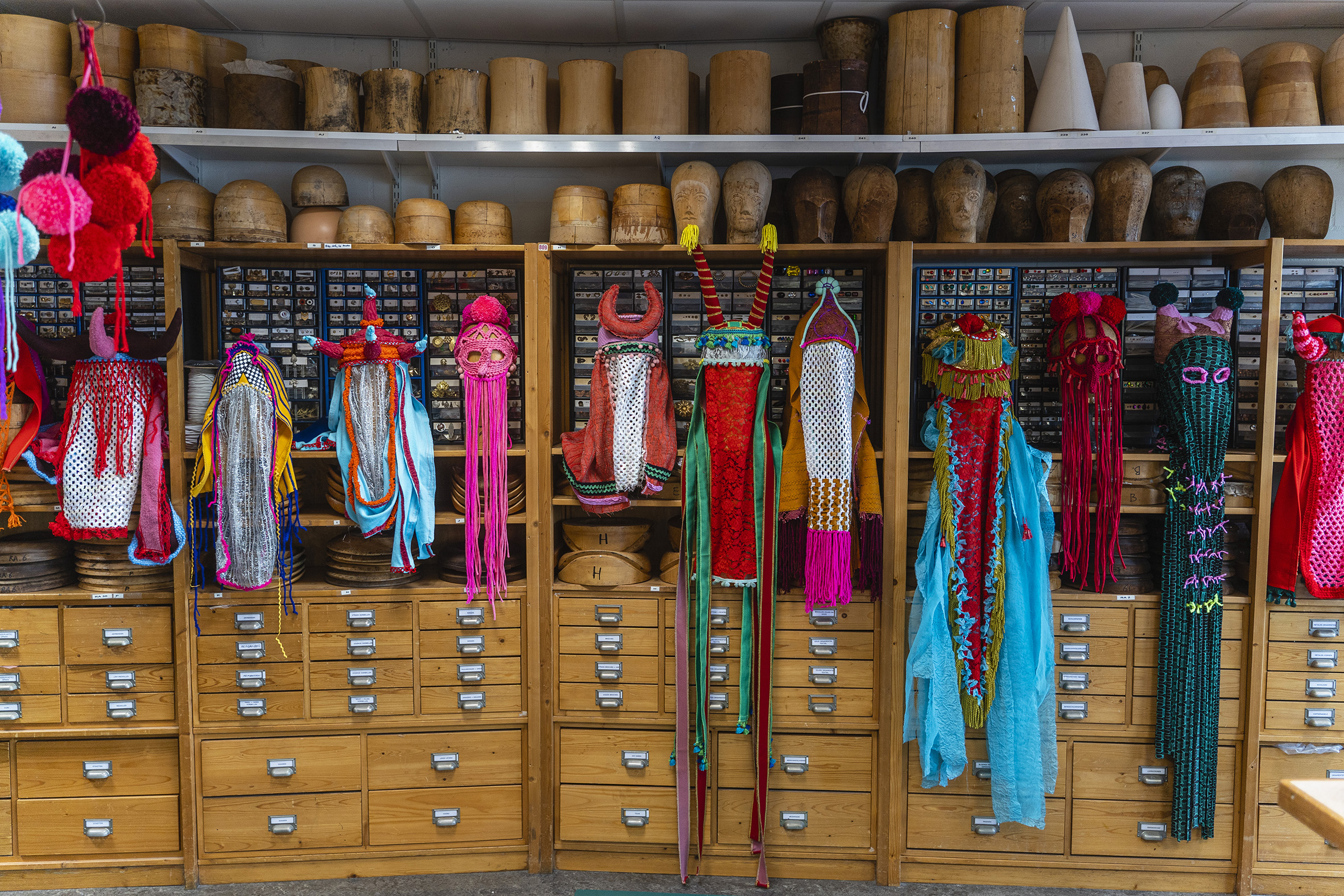
The craft of theatre: the milliners
Productions typically look magical, but the magic is not just pulled out of a high hat. Behind the scenes, every person in every department does their part to help create a captivating setting, whether in terms of lighting, costumes or scenery. Who does what and what does their creative process look like? Maria van Heijningen-Heidemann is a senior milliner. She tells us more about her work in the milliners workroom.
Text: Lune Visser
Hats, masks, animal heads or sky-high headpieces: everything performers can wear on their heads is made in the milliners workroom. Maria: ‘The job is different every time and that keeps it interesting. Besides headwear, we also make costume props, appliqués, jewellery and add-ons for costumes. There’s no specific training for what we do here: all four of us come from different backgrounds. It’s great if you’re handy, creative and solutions-oriented, but in our department you mostly learn by doing.’


Perfect fit
To make sure that a piece of headwear stays in place during a performance, it is made to measure. ‘What we make should never feel uncomfortable or irritating to a performer, that’s our goal. We can’t have them be distracted by what they wear on their head when they’re singing or dancing. That’s why a hat needs to be a perfect fit. When we make large masks, we use the inside of a hard hat, which can be adjusted to size. That creates a secure fit without being visible.’
Sizing
Is Maria an expert at guessing what a person’s head circumference is? ‘I wouldn’t say so. That’s pretty tough to do. Sometimes a person’s head looks either big or small, but the measuring tells you different. One thing that’s pretty convenient is that people’s head sizes don’t change. We don’t lose or gain weight on our heads. People can lose their hair of course or grow it out. Then we might have to go a size down or up. Or if a performer is expected to wear a wig under their headwear, their head circumference will increase quite a bit. These are things we need to consider in our line of work.’

All-around success
It is not enough for the performer wearing the headpiece to be happy with it, the designer needs to like it as well. ‘Some designers come to us with very specific ideas and others just give us a rough outline, which we’ll then have to learn interpret in a short time. We usually sit down with them to make sure we understand what it is they’re after. We basically bring a designer’s idea to life. It’s a great feeling when we get it right and our work is exactly what they had in mind.’ But not every design is a success… ‘Sometimes a hat or headpiece simply doesn’t work on stage or a director isn’t happy with it. That’s disappointing of course, but it’s part of the job. We accept that and we move on. And who knows, we might be able to use the rejected piece of headwear some other time.’



